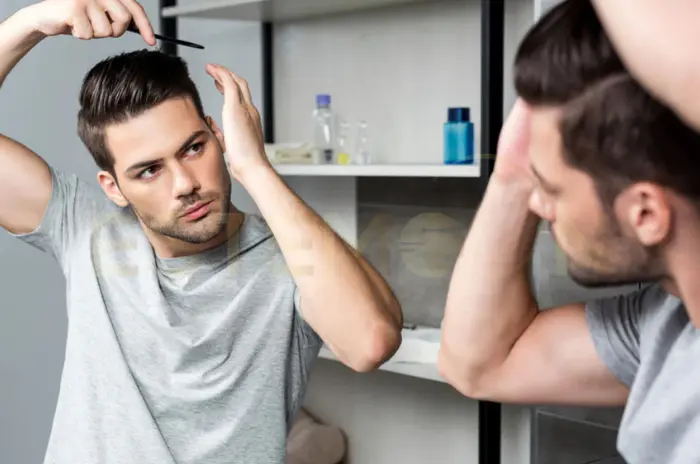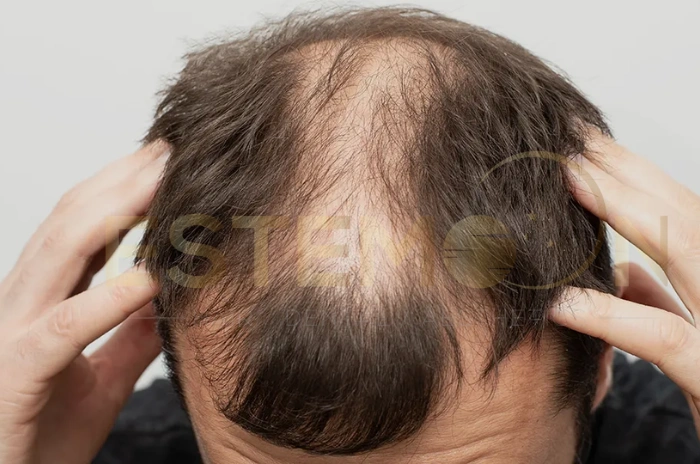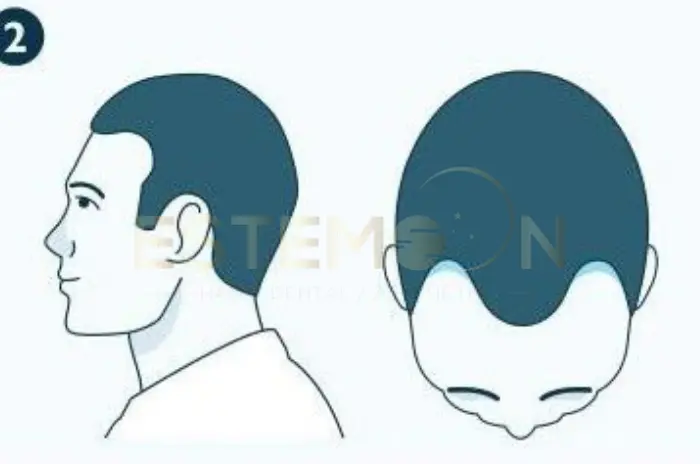Male pattern baldness affects millions of men worldwide, creating a significant demand for effective hair loss treatments for men. Understanding how hair regrowth actually works can help you make informed decisions about the best hair loss products and treatments available today. This comprehensive guide explores the science behind men’s hair regrowth, practical solutions, and realistic expectations for restoring your hairline.
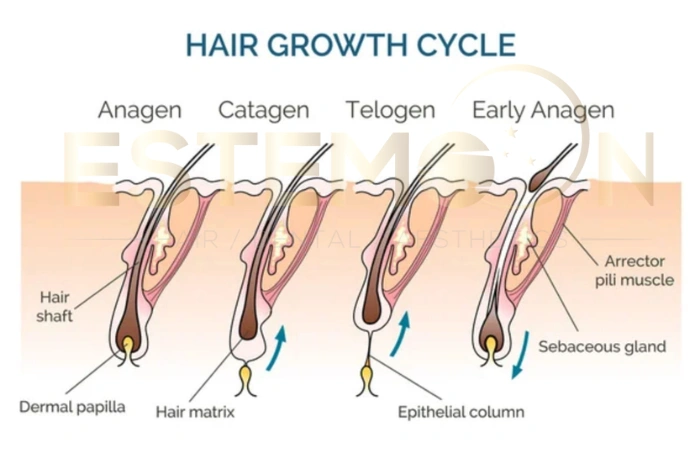
Understanding Hair Regrowth and How It Works
How hair regrowth works begins with understanding the natural hair growth cycle. Hair follicles go through three distinct phases: anagen (growth), catagen (transition), and telogen (resting). During the anagen phase, which lasts 2-7 years, hair actively grows from the follicle. The catagen phase is a brief 2-3 week period where growth stops, followed by the telogen phase lasting 2-3 months before the hair sheds and the cycle restarts.
In men experiencing pattern baldness, dihydrotestosterone (DHT) gradually shrinks hair follicles. This process, called miniaturization, shortens the anagen phase and produces progressively thinner, weaker hair strands. Eventually, follicles become so small they can no longer produce visible hair, leading to apparent baldness.
Hair regrowth treatments work by either blocking DHT production, stimulating blood flow to follicles, or providing essential nutrients for healthy hair growth. The key to successful regrowth lies in starting treatment before follicles become completely inactive, as dormant follicles can potentially be reactivated with the right approach.
The Science Behind Hair Follicle Regeneration
Modern hair growth products target various aspects of the hair growth cycle. Vasodilators like minoxidil increase blood circulation to the scalp, delivering more nutrients and oxygen to hair follicles. DHT blockers such as finasteride prevent the hormone from binding to follicle receptors, allowing miniaturized follicles to gradually return to normal size.
Clinical studies show that combination treatments often produce superior results compared to single-agent therapies. This approach addresses multiple factors contributing to hair loss simultaneously, maximizing the potential for successful regrowth.
The Main Causes of Hair Loss in Men
Male pattern baldness causes stem from a combination of genetic predisposition and hormonal factors. Androgenetic alopecia, affecting up to 80% of men by age 70, occurs when hair follicles are genetically sensitive to DHT. This hormone is produced when testosterone interacts with the enzyme 5-alpha reductase, primarily found in hair follicles and sebaceous glands.
Genetics play the dominant role in determining hair loss patterns and timing. Contrary to popular belief, the baldness gene can be inherited from either parent, not just the mother’s side. Research indicates that multiple genes influence hair loss susceptibility, making it difficult to predict exact patterns based on family history alone.
Other contributing factors include:
- Chronic stress elevating cortisol levels
- Nutritional deficiencies, particularly iron and protein
- Autoimmune conditions like alopecia areata
- Medications including blood thinners and antidepressants
- Tight hairstyles causing traction alopecia
- Scalp infections or inflammatory conditions
Environmental and Lifestyle Factors
Thinning hair men experience may also result from environmental toxins, smoking, and poor scalp hygiene. Pollution and UV radiation can damage hair follicles over time, while smoking reduces blood circulation to the scalp. Regular scalp massage and proper cleansing with quality hair loss shampoo can help maintain optimal follicle health.
Hormonal fluctuations due to thyroid disorders, diabetes, or metabolic syndrome can also trigger hair loss. Addressing these underlying health conditions often improves hair growth outcomes when combined with targeted treatments.
Choosing the Right Hair Loss Treatment for You
Selecting appropriate hair loss treatments for men requires understanding your specific type and stage of hair loss. The Norwood-Hamilton scale helps classify male pattern baldness from stage I (minimal recession) to stage VII (extensive crown and frontal baldness). Earlier stages typically respond better to non-invasive treatments, while advanced cases may require surgical intervention.
Minoxidil for men remains the most widely used topical treatment, available in 2% and 5% concentrations. The 5% solution generally produces better results but may cause more scalp irritation. Minoxidil works best for crown thinning and can help maintain existing hair while promoting modest regrowth of vellus hairs.
Finasteride is the most effective oral medication for male pattern baldness, blocking approximately 70% of DHT production. Clinical trials demonstrate that 83% of men maintain their hair count after two years of treatment, with 65% experiencing noticeable regrowth. However, finasteride requires ongoing use to maintain benefits.
Topical Solutions and Specialized Products
DHT blocker shampoo provides a gentle introduction to anti-androgen therapy. These shampoos typically contain ketoconazole, saw palmetto, or caffeine to help reduce DHT levels at the scalp surface. While less potent than prescription medications, they can complement other treatments effectively.
Hair growth shampoo formulations often include biotin for hair growth, niacin, and amino acids to strengthen existing hair and improve scalp condition. Premium hair serum for growth products may contain peptides, stem cell extracts, and botanical ingredients that support follicle health.
| Treatment Type | Effectiveness | Side Effects | Cost Range |
|---|---|---|---|
| Minoxidil | Moderate | Scalp irritation | $20-50/month |
| Finasteride | High | Sexual dysfunction (2-4%) | $10-30/month |
| DHT Shampoo | Low-Moderate | Minimal | $15-40/bottle |
| Hair Transplant | Very High | Surgical risks | $4,000-15,000 |
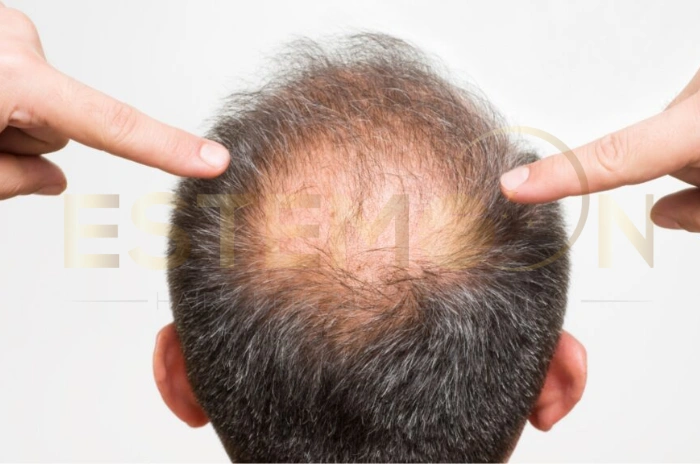
How to Prevent Further Hair Loss
Prevent hair loss men can achieve through proactive measures that protect existing follicles and optimize scalp health. Early intervention is crucial, as preventing additional loss is often easier than stimulating new growth. Regular use of gentle, sulfate-free hair loss shampoo helps maintain scalp balance without stripping natural oils.
Dietary modifications play a significant role in hair health. Ensuring adequate protein intake (0.8-1.2g per kg body weight) provides the building blocks for keratin production. Iron, zinc, and B-vitamins are particularly important for healthy hair growth. Consider supplementation if blood tests reveal deficiencies.
Stress management techniques such as meditation, regular exercise, and adequate sleep help regulate hormones that affect hair growth. Chronic stress elevates cortisol levels, which can push hair follicles into the telogen phase prematurely, accelerating hair loss.
Scalp Care and Maintenance Strategies
Proper scalp massage using essential oils like rosemary or peppermint can improve circulation and may provide modest benefits. Studies suggest that daily 4-minute scalp massages for 24 weeks can increase hair thickness in some men. Use gentle pressure and circular motions to avoid damaging fragile hair.
Protecting hair from physical damage involves using wide-tooth combs, avoiding excessive heat styling, and choosing loose hairstyles. UV protection for the scalp becomes increasingly important as hair density decreases, as sunburn can damage follicles and worsen hair loss.
What to Realistically Expect from Hair Regrowth
What to expect hair regrowth varies significantly based on individual factors, treatment type, and consistency of use. Most men beginning minoxidil hair growth treatment notice initial shedding within 2-8 weeks, followed by gradual improvement over 6-12 months. Complete results typically take 12-18 months to fully manifest.
Realistic expectations include:
- 30-40% of men experience moderate regrowth
- 40-50% maintain existing hair successfully
- 10-20% see minimal or no improvement
- Results require continuous treatment to maintain
Hair regrowth treatments work best for men with recent hair loss (within 5 years) and those with smaller areas of baldness. Crown thinning generally responds better than frontal hairline recession. Complete restoration to juvenile hairlines is unrealistic with current non-surgical treatments.
Timeline and Progression Monitoring
Progress photos taken monthly in consistent lighting help track improvements objectively. Focus on hair density, coverage, and thickness rather than dramatic length changes. Many men notice improved hair texture and reduced shedding before visible regrowth becomes apparent.
Baldness treatment success also depends on addressing underlying health issues, maintaining treatment consistency, and having realistic expectations. Combining multiple approaches often yields superior results compared to single treatments.
Finasteride for Hair Regrowth Benefits and Risks
Finasteride for hair regrowth represents the gold standard for medical hair loss treatment in men. This 5-alpha reductase inhibitor effectively reduces DHT levels by approximately 70%, allowing miniaturized follicles to gradually recover. Clinical studies demonstrate that finasteride stops hair loss progression in 90% of men and promotes noticeable regrowth in 65%.
The medication works best when started early in the hair loss process, before extensive miniaturization occurs. Men typically begin seeing results after 3-6 months of consistent daily use, with peak benefits achieved at 12-24 months. Finasteride must be continued indefinitely to maintain results, as DHT levels return to normal within weeks of discontinuation.
Benefits of finasteride include:
- Clinically proven effectiveness in multiple studies
- Convenient once-daily oral dosing
- Relatively affordable long-term treatment
- Well-established safety profile over decades
- Compatible with other hair loss treatments
Understanding Potential Side Effects
Side effects occur in 2-4% of men taking finasteride, with sexual dysfunction being the most commonly reported concern. These effects typically resolve within months of discontinuing treatment. Some men experience decreased libido, erectile dysfunction, or reduced ejaculation volume, though studies show these rates are similar to placebo groups in some trials.
Recent research has investigated post-finasteride syndrome, a controversial condition where some men report persistent side effects after stopping treatment. While the exact mechanism remains unclear, the overall risk appears to be very low based on large-scale epidemiological studies.
Regular monitoring with healthcare providers helps identify any concerning changes early. Men considering finasteride should discuss their medical history, current medications, and personal risk factors to make informed treatment decisions.
FAQs About Hair Regrowth for Men How It Truly Works
What are the main causes of hair loss?
The primary cause is androgenetic alopecia (male pattern baldness) due to genetic sensitivity to DHT hormone, affecting up to 80% of men by age 70.
How does hair regrowth actually work?
Hair regrowth works by either blocking DHT hormone, increasing blood flow to follicles, or providing nutrients to reactivate miniaturized hair follicles during their growth cycle.
How can you prevent further hair loss?
Prevention involves using DHT-blocking treatments early, maintaining proper nutrition with adequate protein and vitamins, managing stress, and practicing gentle scalp care.
What can you realistically expect from regrowth?
Most men can expect to maintain existing hair with 30-40% experiencing moderate regrowth, requiring 12-18 months of consistent treatment to see full results.
Follow us on social media for updates, tips, and patient success stories:


